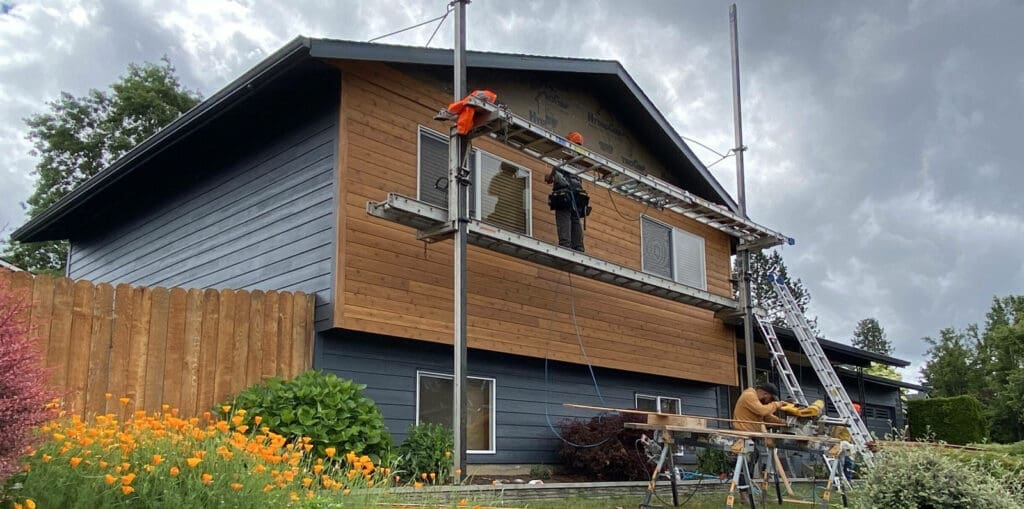The Portland housing market has been going crazy for the past decade or two, and there are no signs of it slowing down for very long. Many of our clients are concerned with the value of their homes and what they can do to get top dollar when it comes time to sell. And when the “does new siding increase home value” question comes up, the answer is almost always yes.
According to a 2022 Remodeling Magazine cost vs value report, installing new siding falls in the bottom third of overall costs for larger home improvements. In that same report, the return on investment is in the top 25 percent! It is the very definition of more bang for your buck.
Visual Impact – Versatility – Energy Efficiency
Let’s start with the visual impact. Imagine driving up to a house with worn, weather-beaten siding versus one with a fresh, modern exterior. The difference is striking. New siding instantly enhances curb appeal, making your home stand out in the neighborhood. It’s that initial impression that can significantly influence a potential buyer’s perception of your property.
Moreover, new siding offers versatility in terms of design and material options. You can choose from a variety of colors, textures, and styles to complement your home’s architecture and your personal taste. This flexibility allows you to tailor the look of your home to suit current trends or create a timeless appeal that looks good for years to come.
With James Hardie siding, you have an amazing number of options to choose from when deciding on the new look for your home. There’s the traditional lap siding, a classic choice that suits a wide array of architectural styles, from traditional to modern homes. For those seeking a more contemporary look, Hardie vertical and architectural panel siding offers a sleek and modern aesthetic.
It’s not all about looks, either. Functionality plays a major role too as siding acts as a protective shield for your home, safeguarding it against the elements. Today’s siding is better equipped to keep moisture out and keep the exterior of the home nice and dry.
Improved energy efficiency can be a huge selling point too. Updated siding often comes with improved insulation properties, which can help regulate indoor temperatures. This not only enhances comfort but also reduces energy bills—a win-win situation that appeals to potential buyers looking for cost-effective and environmentally friendly features.
James Hardie Fiber Cement Siding vs Other Materials
Which brings us back to the ROI of new siding. There are several options–Hardie board, vinyl, aluminum, and wood–to choose from. James Hardie fiber cement siding stands out for its exceptional return on investment (ROI) compared to other siding materials. While it looks great, its durability is a major factor when deciding which material to side your house.
Fiber cement is resistant to rot, pests, fire, and harsh weather conditions, requiring minimal maintenance over time. This longevity translates to reduced repair and replacement costs, boosting its overall value. Vinyl and aluminum siding may be cheaper, but they also don’t have the longevity of fiber cement.
But none of this matters if the siding isn’t installed correctly. Joseph Ketner has been recognized by James Hardie as one of the best siding installers in the country, reaching Elite Preferred Contractor status by the brand. Have a historical home that demands real cedar siding? We do that too and have a 99 percent recommendation rating from our clients. Reach out for a free consultation and see how we can increase the value of your home with new siding.
